Starting at the Beginning of Ocean City’s History
Most visitors must cross a bridge to get into Ocean City, either the Route 50 bridge at the southern end or the Route 90 bridge just 60 blocks north, but those bridges weren’t always there. Today, a visitor can look across the bay to see the Ocean City skyline with hotels, ferris wheels, and the sea in the background. Most visitors heed the call of the ocean and go down to the beach and boardwalk, listening to the waves crash against the shore. This tradition has been repeated for Ocean City visitors for over 150 years, but many people don’t think about how we all came to this stretch of beach along the Atlantic Ocean and who came before us.
A Good First Stop for Your History Education
The Ocean City Life Saving Museum is a great place to start if you are interested in Ocean City’s history. It is located next to the inlet parking lot and is easily accessible from the Boardwalk. Open from Monday-Saturday at 10AM – 5PM, guests can see artifacts in “The Wreck of the Offing”, “The Boardwalk of Yesteryear”, and “Then and Now” exhibits. For information, visitors can check their website to book a tour and research their exhibits.
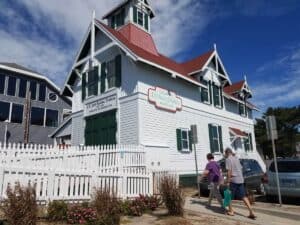
The Island, the People
The Algonquian People
Before a surge of exploration on the mainland of the Americas by Westerners, the Algonquian peoples speaking the Nanticoke language roamed the land of now Worcester County. They were caretakers of the environment on the Eastern Shore. The Assateague and Nanticoke people left their legacy on our resort through their names for some of waterways and places in our region.
The English settlers and John Smith found the indigenous peoples in their widening explorations in the early 1600s and thus began the Western occupation of these lands. Attracted to the area because of its fishing, crabbing, and hunting opportunities, the English wanted to form a settlement. The colony of Maryland was chartered in 1632 and settled in 1634. Our state was founded by Catholics in search of religious freedom from the Church of England, these Catholic settlers first landed on the Eastern Shore, noticing the fishing opportunities available around the Ocean City region.
The settlers began to create trading posts and farms with tobacco as the staple crop across the area. They decided to live in harmony with the Indians and both parties signed the Treaty of 1662 that formalized this peaceful relationship. With the treaty, English settlers gave the tribal chief Matchcoats a warm outer garment in return for land. Both sides also promised not to kill each other. The English violated the treaty and seized the lands and relegated all native peoples to five reservations along the Pocomoke River.
Today, the Assateague Native Americans are remembered with artifacts and a totem pole carved by Peter Toth. This 25-foot tribute stands in the Inlet as a reminder of their culture in Ocean City.
Western Settlers
In 1686, Lord Baltimore granted the land with Ocean City, originally chartered by Cecilius Calvert, to Thomas Fenwick. As Fenwick took over the land, the Treaty of 1722 exposed his intentions of pushing out the Indians.
Because of this treaty, the government of Maryland put the Indian reservations under provincial leadership until the Indians moved north towards Canada, remained near the Indian River in Delaware, or on the Choptank reserve.
Fishing Village
Before recreation and commercial fishing, people living in the region including farmers would fish for meals. Fishing was less a relaxing pursuit and more used for survival in the winter during the early 1800s.
The first professional fishermen appeared because they were more efficient in the collection of fish and better at trading and there was money to be made. When locals built lodging for people visiting Ocean City in the late 1800s, wealthy people from large cities began to hunt in the area. After experiencing the hunting here as a visitor, many of these rich visitors would purchase land to continue hunting. These rich visitors, known as the “first tourists”, allowed Ocean City to become famous for being a fishing village and hunting location with an ample supply of game.
Early Tourism
The attraction of this region to hunters and fishermen resulted in landowners like Stephen Tabor and Issac Coffin promoting the land as a vacation destination. Tabor advertised in the late 1800s encouraging people to visit Ocean City, a tiny seaside village on a barrier island. Tabor called the area “The Ladies’ Resort to the Ocean.” This was the beginning of economic growth in Ocean City.
First Hotels
Coffin developed the first lodging facilities in 1869, the Rhode Island Inn with a tavern. The inn had a cottage-feel and paved the way for the construction of the Atlantic Hotel on the shore in 1875. The area was first named Ocean City by the Atlantic Hotel Company, the owner of the Atlantic Hotel.
At the time Fenwick obtained the rights of the grant to this land, most visitors were traveling to Ocean City by stagecoach and ferry. At that time, the area catered mainly to small, recreational fishing pursuits. In 1878, the Baltimore, Chesapeake and Atlantic Railroad, started train service. This train was known as Black Cinders and Ashes and it attracted more visitors from mainland Maryland and the Delmarva Peninsula. Ending at now Sunset Park, the train provided direct access to Ocean City. With this reliable train transportation, the town could now ship fish to urban areas. This increase in the economic viability of fishing led to additional commercial fishing enterprises and the erection of lodging for guests.
Fire Molded the Skyline
Fire also touched Ocean City’s skyline during the 20th century. The Plimhimmon, one of the first three hotels in OC, stood in 1864 until a fire almost destroyed it in 1962. The fire raged during expansion of the hotel, and is one of the many fires to brand Ocean City. The hotels during this time period were mostly made of wood which allowed the fires to spread rapidly. The Plimhimmon fire was one of the largest blazes fought by the Ocean City Volunteer Fire Company. These dedicated firefighters were able to save the rear of the hotel building. The Plim Plaza was built to incorporate the remains spared by the fire of the original Plimhimmon hotel.
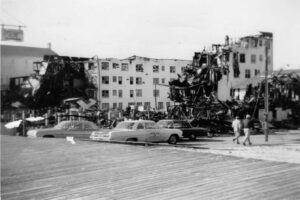
Today
Storms Led to New Transportation
Storms on the shore of Maryland are nothing new to residents, as flooding and damage are recurring features of the low-lying region. Throughout Ocean City’s history, water damage has affected buildings often with even more extreme outcomes. The hurricane in 1933 separated Ocean City and Assateague Island and created the inlet. This new waterway allowed for commercial and recreational fishing to grow in Ocean City. Now, boats could safely harbor behind the island but still access the ocean through the inlet, just as the boats do today to participate in the White Marlin Open. The town became the White Marlin Capital of the World and hosts other fishing tournaments. The West Ocean City Harbor is a working harbor where fishermen bring in their harvest of scallops, sea bass, sharks, red snapper, lobsters and many other fish and shellfish varieties. With the cutting of the inlet, the storm also destroyed the railway access to the island.
After World War II, the economic boom of the U.S. led to the construction of the Chesapeake Bay Bridge which was completed in 1952. This construction replaced the ferry that had been carrying passengers across the bay and allowed visitors to travel more quickly from the western shore of Maryland by car. Engineers began the construction of Chesapeake Bay Bridge-Tunnel in 1960, giving access to Ocean City from Virginia. With quicker transportation, Ocean City continued to grow adding restaurants, hotels, and entertainment to meet the demand.
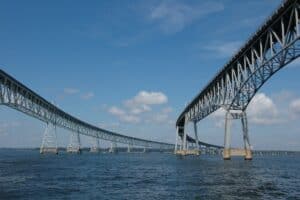
Growth of Businesses
Ocean City became one of the most popular vacation destinations on the East Coast for vacationers after the Bay Bridge construction finished in 1964. Over 15,000 condominiums were built, allowing more people to live, work, and play here.
The Town of Ocean City wanted to extend the visitor season beyond the traditional dates of Memorial Day to Labor Day and added more events for the shoulder and off-seasons. Annual events continue to grow and Sunfest, Cruisin’ Weekend, Winterfest of Lights, Jeep and Bike Weeks, the White Marlin Open, and parades are important celebrations. The Shore Craft Beer Festivals also create this surge of visitors wanting to see new beers on tap and taste some local favorites. Traditional family holiday like Memorial Day, Labor Day, and the 4th of July are still the busiest times for Ocean City.
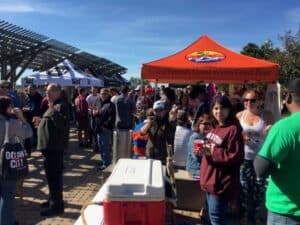
Future of Ocean City
Although Covid-19 has adversely affected tourism destinations nationwide, Ocean City businesses are surviving with creative ways to protect the safety of visitors. Fish Tales has developed bumper tables to practice social distancing at their restaurant. Many have also added outdoor spaces to their businesses. Layton’s Family Restaurant adapted part of their parking lot and street to accommodate outdoor seating as has Blacksmith in Berlin. The Barefoot Beach Bride is building a venue space to provide for more weddings once the pandemic situation improves. Businesses and visitors hold on to optimism as they look for ways to adapt. It will be interesting to watch how Ocean City adapts to the new COVID challenge while it continues to provide access to the Atlantic Ocean to hundreds of thousands of visitors each year.
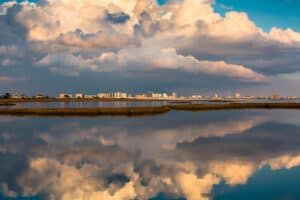
Citing
Ocean City Maryland Boardwalk. “History.” Ocean City Maryland Boardwalk, Ocean City Boardwalk, www.ocboards.com/history.php.
Helf, Kristin, and Brandon Seidl. OCEAN CITY ODDITIES. HISTORY PRESS US, 2020.
“OC History.” History | Ocean City, Maryland, The Official Site of Ocean City, Maryland, ococean.com/oc-history.
Proscia, Kristin. “History.” OceanCity.com, Oceancity.com, 18 Mar. 2020, www.oceancity.com/history/.
“History.” Ocean City MD Chamber of Commerce, Greater Ocean CIty, Maryland Chamber of Commerce, oceancity.org/everything-oc/oc-info/history/.
“Ocean City, Maryland.” Wikipedia, Wikimedia Foundation, 17 June 2020, en.wikipedia.org/wiki/Ocean_City,_Maryland.

